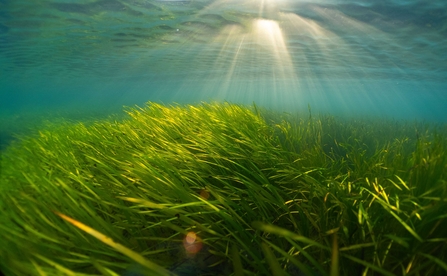To celebrate World Seagrass Day (1 March 2024) and Seagrass Awareness Month throughout March, Hampshire & Isle of Wight Wildlife Trust is highlighting how this amazing species does more than just please the eye.
Typically found in sheltered, shallow coastlines and estuaries, seagrasses form stunning undersea meadows, providing food and shelter for a whole array of marine life. Seagrass is the only marine flowering plant in our oceans: their grass like leaves are capable of flowering and producing seeds whilst the plant also has roots buried in the sea floor.
The Solent’s seagrass meadows are of international importance, as they support a rich biodiversity. Hidden among the seagrass, you may find species such as sea anemones, stalked jellyfish, sea slugs, pipefish and seahorses. The leaves provide shelter to act as nurseries for commercially important fish species, such as cod and sea bass, the latter of which spend up to seven years growing in the Solent before joining the migratory adult population. Cuttlefish visit the seagrass meadows to breed as well, attaching their black eggs known as ‘sea grapes’ to the seagrass leaves.


